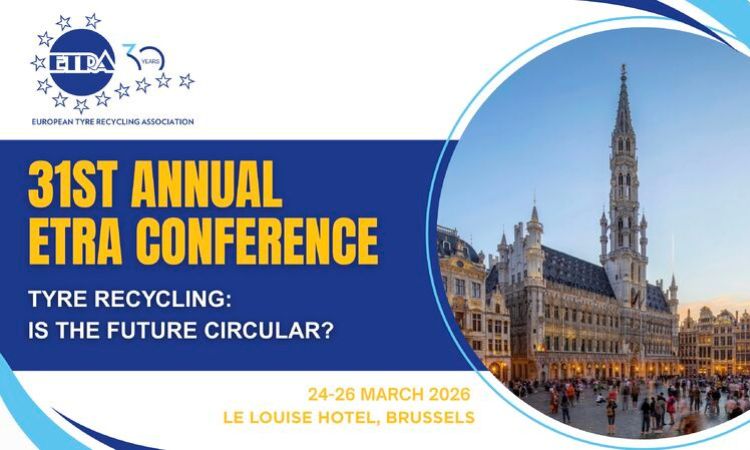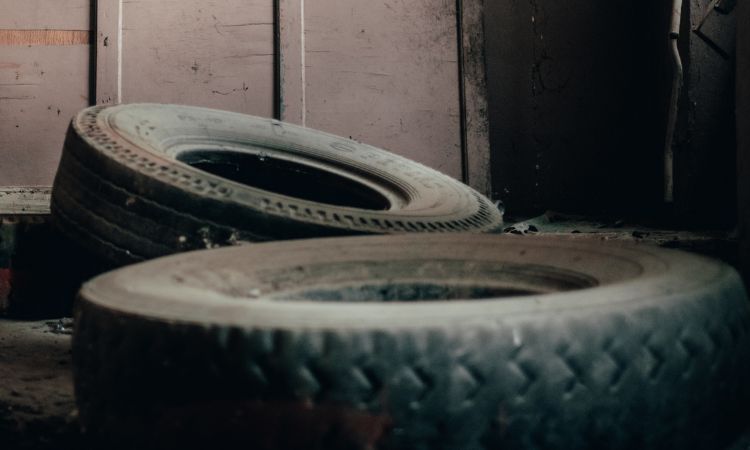Weibold Academy: Innovation in batch-type waste tire pyrolysis technology (part I)
Weibold Academy article series discusses periodically the practical developments and scientific research findings in the end-of-life tire (ELT) recycling and pyrolysis industry. One of the goals is to give entrepreneurs in this industry, project initiators, investors and the public, a better insight into a rapidly growing circular economy. At the same time, this article series should also be a stimulus for discussion.
In the current article we address the question of how the advantages of a classic batch-reactor process design can be combined with those of a continuous process mode. We refer to the extensive scientific literature and to the findings of successful companies in the industry.
Introduction
Every year approximately 3 billion tires are produced worldwide [YADAV, 2020]. These tires have reached their end-of-life after a relatively short period of use, thus generating an annual waste tire volume of much more than 20 million tons. The complexity of the tire material composition (metal, textile, and vulcanized rubber, etc.) is principally a challenge for the recycling industry, unless the tires are unsustainably burned in industrial ovens under the title "energy recovery".
In terms of a sustainable, environmentally sound treatment of waste tires, thermochemical conversion technologies have become increasingly important in recent years, and some of them have already proven their technical and economic maturity.
Pyrolysis is a thermochemical pathway to treat vulcanized rubber for the recovery of valuable products. It involves the decomposition of the rubber at high temperatures (400 – 900°C) in the absence of an oxygen atmosphere. The main products of pyrolysis are a solid fraction, usually raw carbon black (according to ASTM D8178); a liquid fraction comprised of light oil, heavy oil, and tar; and a gas fraction. [Ramirez-Canon et. al., 2018]
The thermochemical decomposition process (pyrolysis) takes place in a reactor (reaction zone). A distinction is made between batch and continuous filling and processing modes, which in turn significantly determine the reactor design.
Batch-reactors: First among equals or ideal reactor for Waste Tire Pyrolysis?
First, it should be mentioned that there is not only one best reactor design and / or process mode, but different options can be considered depending on the circumstances. Nevertheless, there are aspects that can make a batch-type pyrolysis process a prime inter pares, especially for the thermochemical processing of end-of-life tires (ELT).
Batch-type processes are typically characterized by a completed loading process, followed by completed processing and a subsequent unloading process. Plotting this sequence on a time axis, at different times there are different states (as material concentration in the reactor is changing with the time). In contrast to this, with continuous process designs, the material and the processing are "in flux".
This (definition) also results in the often cited "disadvantages" of a batch-type process: E.g., down-times (for loading and unloading) and poor energy efficiency due to heating up and cooling down phases. The latter can take many hours in industrial applications.
From an overall view of a modern industrial process, however, these "disadvantages" can be overcome by connecting (at least) two batch-type reactors in parallel, which are alternately filled and discharged, while maintaining the reaction temperature in the reactors (no cooling and heating phases). Of course, there are also challenges associated with flushing the system by non-oxidative gases during or after the loading and unloading processes, but these can be mastered with sophisticated but uncomplicated technology.
Batch pyrolysis systems are often equated with the cheapest, environmentally, and health-damaging “systems from Asia” usually with open air and unfiltered heating source. Anyway, these are banned in most countries of the world and are not subject of our discussion.
In fact, there are already several successfully commercialized ELT pyrolysis concepts based on batch-style reactors, which enable an almost continuous overall process through intelligent coordination of the individual completed processes. Therefore, these concepts can also be referred to as semi-continuous (whereby the focus is more on "continuous" in an over-all view).
As an example, and reference: An existing and commercially successful design consists of two batch-type reactors, which are alternately and automatically filled and discharged, and are always kept at the process temperature. A stirrer vigorously mixes the charge, thereby intensifying the rate of heat transfer and minimizing temperature differences inside the reactor. These aspects lead to energy savings, time savings, and less strain on the reactor walls at the same time. Else, in this way, with only two reactors 20 to 22 full cycles can be completed within 24 hours. With over 24 tons per day (10,000 tons tires per year), this system seems in no way inferior to a more sophisticated but continuously operated rotary kiln or Auger screw system.
Just to name a batch concept that is not recommended as a reference (this company recently filed bankruptcy in the USA and in Germany): This project consisted of 20 batch reactors (!), where each reactor measured around 5 m in height and have an internal diameter of around 2 m (corresponding to an approx. volume of 16 m3 per reactor). The annual capacity should have been 40,000 tons of waste tires. Meaning, that the capacity of each of these enormous reactors would be only 5 to 6 tons/day. This low capacity is due, among other things, to the need for manual loading (!) of the feedstock baskets and the extremely long heating, reaction, and cooling times (up to 14 hours in total). We would not pay further attention to this expensive and failed concept if it did not throw indirectly negative spotlights on modern and successful semi-continuous concepts due to its current press presence.
Batch-based processes have been used in both refineries and the chemical industry for an exceedingly long time. And there are good arguments for paying more attention to these for the thermochemical processing of end-of-life tires.
Batch-based semi-continuous tire pyrolysis concept: better process control
It is evident that the pyrolysis process is very sensitive to the feedstock composition and to the applied conditions of temperature (T), heating rate (HR), mass flow rate (FR) or load, etc. The thermal degradation behavior, as well as the kinetic parameters, varies with the change of waste tire resource depending on the manufacturer and their proprietary chemical composition. [QUEK et.al., 2012]
Tires consists of about 60% m/m decomposable materials which are synthetic rubbers (CBR, SBR and BR), natural rubber (NR), lubricants, antioxidants, and plasticizers. The remaining 40% m/m are non-decomposable compounds as Carbon Black (CB), Zinc oxide (ZnO), calcium carbonate (CaCO3), silica (SiO2), steel, and other minor additives, which are all recovered as solids.
The degradation (pyrolysis) takes place mainly over the rubber compounds. These processes are very interfered and overlapped with each other. Else, the pyrolysis process of all rubbers in the tire takes place in parallel at the same time. [GONZALES et.al., 2001]
The immediate product of this degradation is a gas which for the most part condenses to an oil with broad fuel properties [WILLIAMS et.al., 2010] or as feedstock for the chemical industry.
This makes it clear how important it would be to precisely determine quantitatively the rubber in tires. However, since the exact chemical composition of the waste tire deliveries cannot be determined easily in practice, the point in time of the completed thermal decomposition must be determinable as precisely as possible in an ongoing pyrolysis process.
This point in time is reached when all volatile components have been extracted from the solid fraction. Simplified: when the raw carbon black is "dry". If this is not the case, the pyrolysis process is not complete and needs more reaction time or a higher temperature. [LOPEZ et. al., 2010]
A relatively simple way to determine the correct point in time is to measure the gas flow: if no more gas escapes from the material, the pyrolysis process can be regarded as finished. However, this simple yardstick cannot be applied to continuously charged reactor models, as there is an uninterrupted flow of material in the reactor and gas is always produced (without large amplitudes) at a constant reaction temperature.
On the other hand, in the case of a reactor automatically filled in batches, this indicator can be used relatively easily to determine the end of the pyrolysis process, since this is a closed process with a defined amount of material (batch).
Of course, the correct process parameters (e.g., residence time) can also be checked by analyzing the raw carbon black for continuously charged reactors - but only periodically and afterwards.
This aspect shows that modern batch-based semi-continuous reactors can be very flexible in terms of precise process control which is required due to the given inhomogeneity of the material composition of end-of-life tires. In addition, a correct process design with several reactors leads to a semi-continuous overall process sequence, which should be in no way inferior to a technically more complex (and less flexible in terms of feedstock quality) process variant with continuously charged reactors.
Batch-based semi-continuous tire pyrolysis concept: longer service life and safer
Continuously operating reactors such as Rotary and Auger reactors have been covering a wide range of industrial applications for decades. They have been tried and tested and are state-of-the-art. This also applies to batch-based reactor concepts.
Nevertheless, there are construction-related differences that affect the service life, maintenance cycles (and costs) and operational safety.
In simple terms, all common reactor designs (unless they are electrically heated) consist of two cylindrical tubes. The pyrolysis process takes place in the inner tube. Flue gas flows in the space between the inner and outer tubes and heats the reaction zone in the inner tube to process temperature.
Since these two tubes are immobile in Auger and Batch Reactors, there is a relatively lower sealing effort (against the outflow of the flue gas) than with a rotary kiln design. In the case of the latter, the inner tube, which weighs several tons, rotates, and thus causes a significantly higher and challenging sealing effort between moving and non-moving parts.
Pyrolysis takes place in an oxygen-free atmosphere (otherwise it would be a combustion). This means that the inner tube (the actual reactor) must be reliably sealed against the entry of oxygen from the outside. To prevent oxygen from entering in the event of a leaky seal, the interior of the reactor could be operated under positive pressure. This has the disadvantage that toxic pyrolysis gases escape into the environment in the event of an accident. Alternatively, the reactor can also be operated with a slight negative pressure, which prevents pyrolysis gases from escaping, but would cause atmospheric oxygen to be sucked in and lead to an explosive atmosphere in the reactor. Here, the structural advantages of a reactor design with as few moving parts as possible become transparent, which in turn clearly speaks in favor of a fixed Auger or a batch reactor (in both cases only one rotating axis must be sealed: for a screw or a stirrer).
It can therefore be assumed that, from the point of view of easier seal ability, the operation of an Auger or a batch reactor can in principle be operated more safely than rotary reactors.
Although modern steel alloys can withstand extreme conditions, fluctuating temperatures are disadvantageous in the medium term and weaken the material. Since the continuously charged reactors (rotary kiln and auger), apart from maintenance and / or emergency shutdowns, are always kept at the process temperature, this would be an advantage in terms of service life, as there are no (multiple) daily heating and cooling phases.
A commercially successful batch reactor-based semi-continuous system has clearly shown that a batch reactor can also be operated without these material-stressing down-times while permanently remaining at process temperature.
Conclusion
In summary, it can be stated that batch-based semi-continuous tire pyrolysis systems can then exploit the advantages of "both worlds" (and even more), if
- the material loading and unloading is automated,
- the end point of complete decomposition can be permanently detected by measuring the pyrolysis gas flow (and the process duration can be continuously adjusted),
- the batch reactors are not exposed to any downtimes and are constantly kept at the reaction temperature,
- and the timing of the individual processes has such short intervals that an overall view results in a continuous flow of products.
Copyright: Weibold keeps the sole right for publishing.
Weibold is an international consulting company specializing exclusively in end-of-life tire recycling and pyrolysis. Since 1999, we have helped companies grow and build profitable businesses.









